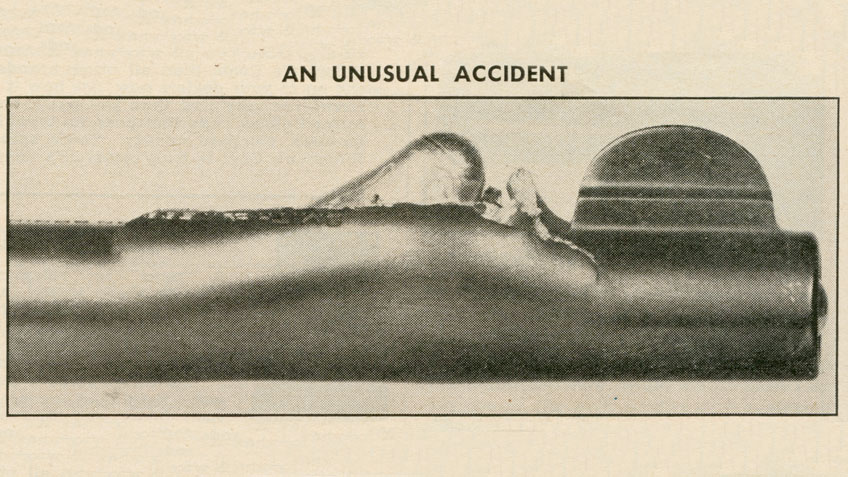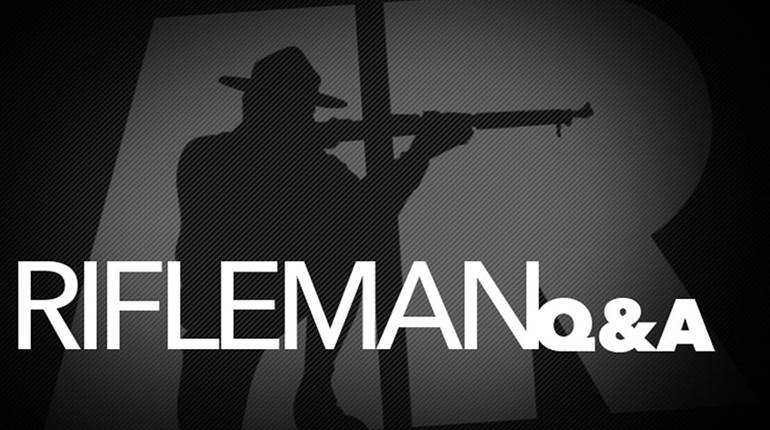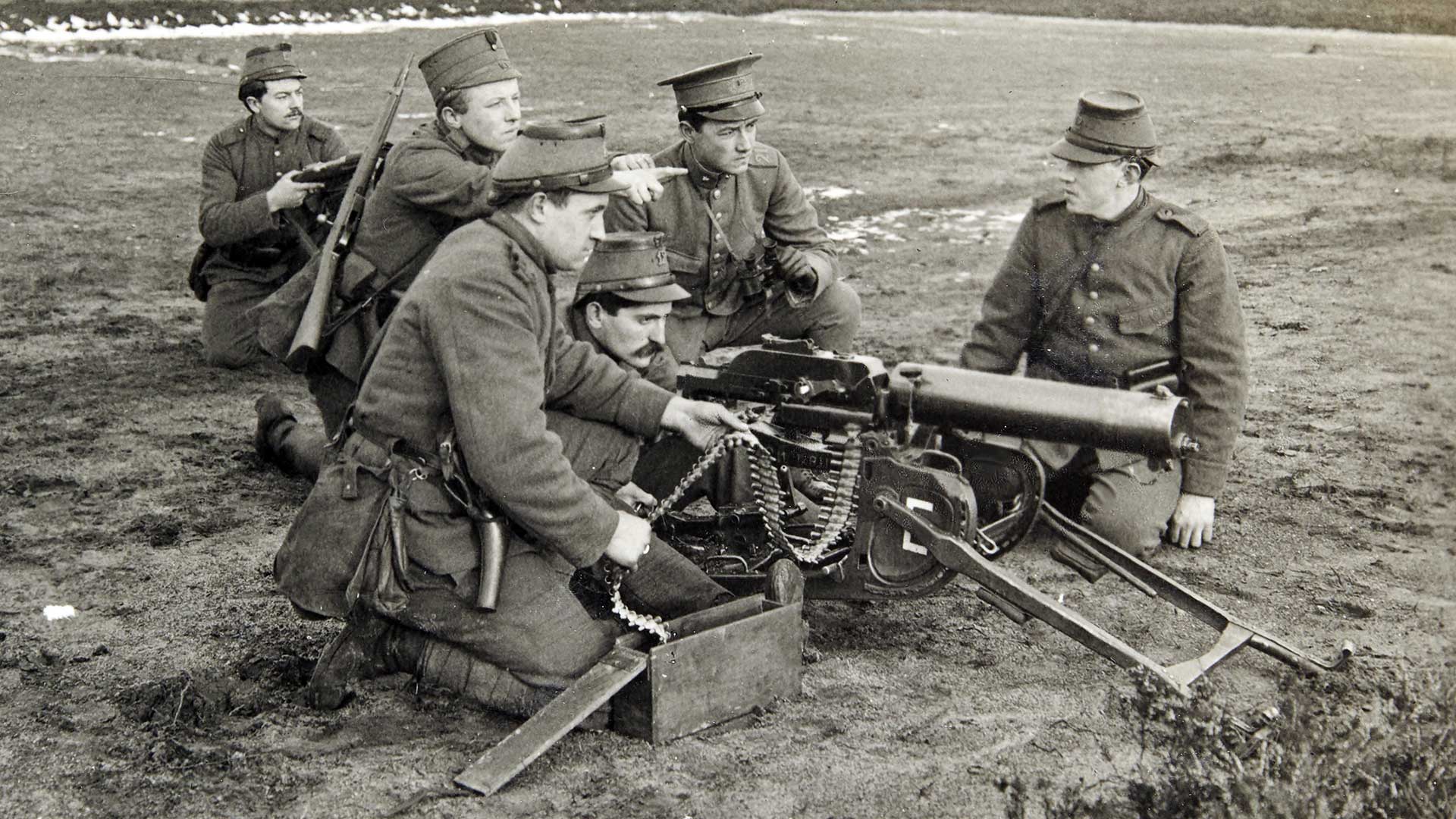
This picture is of an unusual incident whereby five bullets were stuck in a barrel; one just peeping out the muzzle, three more behind it and another which has jumped partially out through a crack in the top of the barrel. This stoppage was initially caused by a squib load.
Q: I recently encountered a malfunction that left a bullet stuck in my barrel. Thankfully the gun failed to cycle the next round, leaving a stove-piped case. What does one do in the event this happens? What causes this to occur? And is there a specific name for this situation?
A: We are glad you noticed the potentially catastrophic hazard before attempting to fire another round. As stated in the NRA Firearms Sourcebook, p. 23, this type of failure or stoppage is considered a “squib load” and is defined as “a cartridge or shell that produces projectile velocity and sound substantially lower than normal.”
“Most commonly, the shooter will be aware of a squib load as a shot that does not produce the expected level of either noise or recoil. Such a condition can be caused by a number of factors: use of old or deteriorated ammunition; contamination of the primer or powder charge; or failure to load a primed case with a sufficient amount of powder. Under the best conditions, the squib load has sufficient power to propel the bullet out of the muzzle (albeit at less than normal velocity). Often, however, a squib load leaves a bullet lodged in the bore—and therein lies the danger. If the shooter fails to recognize that he or she has had a squib load and fires a successive shot with the bore obstructed, disastrous consequences may result for both the gun and the shooter.”
To remedy the obstruction, it is suggested that the operator first unload the firearm by removing the magazine, followed by removing the spent case and/or live round from the chamber. With the firearm declared safe, inspect the bore for obstruction. The same safety procedure applies to revolvers—empty the cylinder and/or remove if possible. Some instances of bullets lodging between the cylinder and forcing cone have occurred, resulting in a seized cylinder. The simplest method for removing a bullet lodged in the bore is with a range rod. Due to the bullet’s obturation, additional force from a mallet or hammer may be required to successfully remove the obstruction—a task that might best be left to a qualified gunsmith who could further inspect the firearm.




































